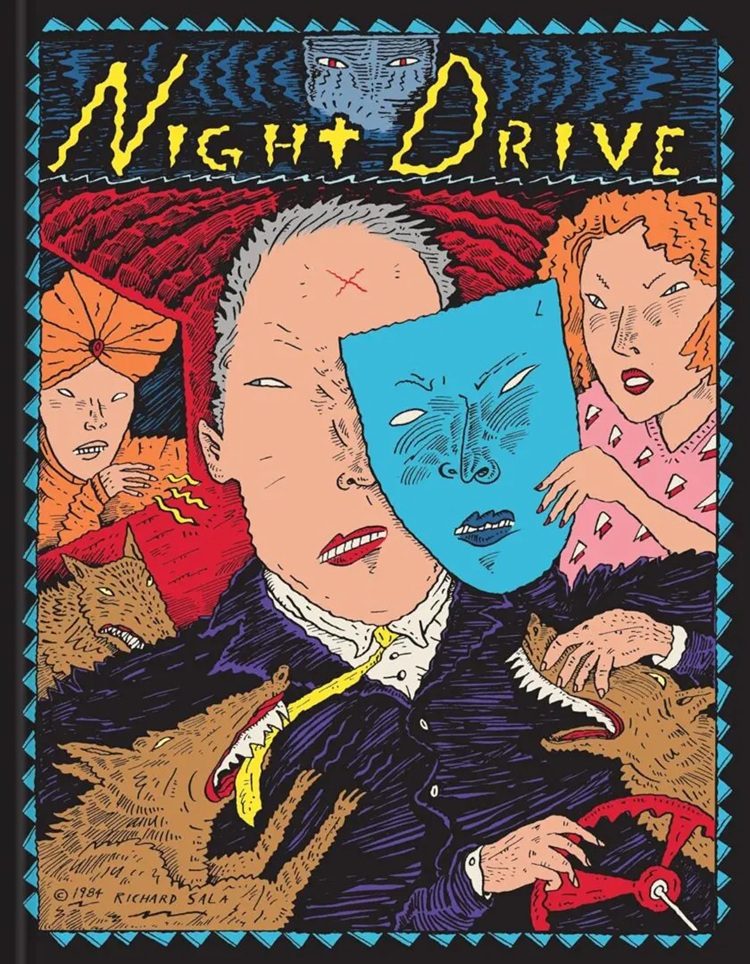
I first saw illustrator Richard Sala’s work behind glass—enshrined in a columbarium niche at the Chapel of the Chimes in Oakland, California.
There, beside an urn, was a stack of his books. Mad Night… The Chuckling Whatsit… Delphine… Titles that grabbed me at once.
Later, as I dug deeper, I found his early work to be a sly, surreal, expressionistic spin on gothic pen-illustrator Edward Gorey. Jagged, precise linework, shot through with something like the half-manic, macabre whimsy of director Tim Burton and the martial punk-rock stomp of X.
Buy Night Drive paperbackCharles Burns and Daniel Clowes—contemporaries who, with Sala, helped define the underground comix scene of the 1980s and ‘90s—explored similar terrain. But Sala’s voice was unmistakably his own.
For some of my peers, Sala’s peculiar voice first announced itself via Invisible Hands (1991), his short on MTV’s Liquid Television. A creepy gem of pulp noir—featuring a masked detective, a trench-coated dame, and a case of doomed inheritance—that story is collected here, in Night Drive.
The Fantagraphics Books release is a doozy.
Self-published in 1984 (in a limited run of 500 copies), Night Drive is Sala’s astonishing, raw debut: a 32-page suite of nightmarish, noir-soaked vignettes. Framed by thoughtful extras—“outtakes” (i.e., pieces prepped for an art-book follow-up), sketches, and remembrances that trace its creation and impact—this new edition from the good folks at Fantagraphics is a beautifully designed tribute to an artist whose strange, singular work has long deserved a wider audience.
Night Drive may be his finest hour. In it, all sense is dream-sense. Non-linear, like a glitchy blast from a deranged DJ holding forth all night at a pirate radio station in the middle of nowhere. Flipping through scratched records and water-stained comic books. Distilling their pop-shadowed essence into this vial of shock serum, remastered from the original art and reprinted for the first time in over 40 years.
Sala died in 2020 from a heart attack. He was 65.
Night Drive was his shot across the bow. A deceptively crude map to his heart—the comic books, dime-store paperbacks, and movie monsters that captured his imagination early on. It’s a seminal volume—essential for the Sala devotee.
Fantagraphics has, once again, done us a public service—this time, preserving the moment Richard Sala first cracked open a window to his basement.
I’d crawl in.